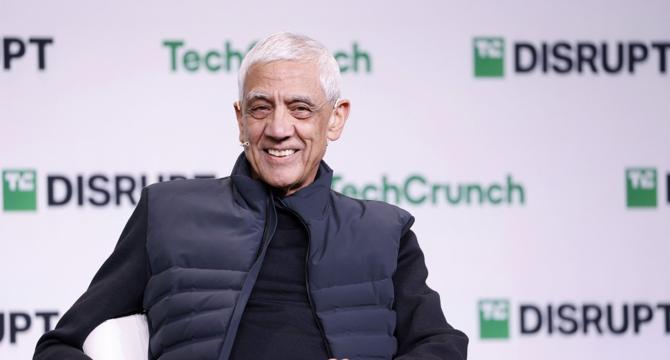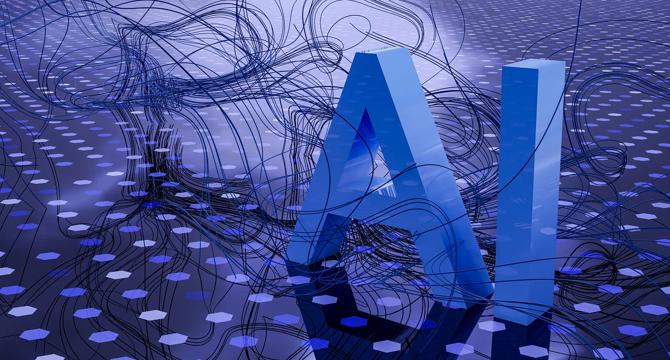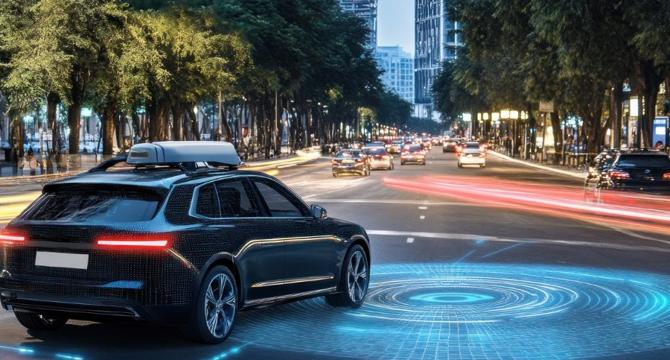Robotics News
Unite
196

Image Credit: Unite
Strategic AI: A Marketer’s Guide to Building a Winning Roadmap
- AI has revolutionized modern marketing with its potential for personalization, efficiency, and innovation, but success requires strategic planning.
- Common pitfalls occur when AI adoption lacks a clear vision, leading to disjointed efforts and missed opportunities for value creation.
- To maximize AI's benefits, marketers must establish a foundation based on context, clear goals, and governance specific to their brand identity and objectives.
- A strategic AI roadmap helps marketers prioritize key performance indicators, align AI initiatives with business goals, and secure stakeholder support.
- Adopting AI without a roadmap can result in challenges like a superficial approach to AI, lack of alignment with business objectives, and operational inefficiencies.
- Key aspects of building an effective AI roadmap include defining brand context, setting measurable goals, and implementing governance processes for continuous improvement.
- Marketers should focus on quick wins and scalable AI tools tailored to the marketing sector to demonstrate value early and sustain momentum.
- Choosing AI technology involves balancing build vs. buy considerations, scalability, flexibility, and ethical implications to ensure long-term success.
- AI serves as a transformational catalyst for marketers, revolutionizing content lifecycle, processes, and campaign management to drive innovation.
- A strategic AI roadmap is crucial for effective AI integration in marketing, emphasizing context, clear objectives, and governance to realize AI's full potential.
Read Full Article
11 Likes
Unite
18

Image Credit: Unite
Aviad Hasnis, CTO of Cynet – Interview Series
- Aviad Hasnis serves as the CTO at Cynet Security, overseeing the development of the XDR platform and MDR services, with a background in cybersecurity roles in the Israel Defense Forces and advanced degrees in engineering and physics.
- Cynet Security offers an automated cybersecurity platform for small and mid-sized organizations, integrating multiple security elements with automation, XDR capabilities, and 24/7 MDR support.
- Cynet focuses on simplifying cybersecurity for SMBs facing similar threats as large enterprises but with limited resources, leading to a demand for consolidated security solutions.
- The All-in-One Cybersecurity Platform by Cynet combines various security capabilities with AI-enabled solutions for user-friendly experience and efficient process automation.
- Cynet's success in MITRE ATT&CK evaluations showcases its AI-driven strategies that achieved 100% Protection and Detection Visibility.
- Cynet ensures accuracy in threat detection by integrating AI with human oversight and continuous validation, enhancing the effectiveness of cybersecurity solutions.
- The All-in-One Cybersecurity Platform by Cynet leverages AI and automation to prevent and mitigate ransomware attacks efficiently through early detection and response.
- While AI-driven cybersecurity advancements are significant, Cynet emphasizes human oversight in strategic decision-making to complement automation.
- Large Language Models (LLMs) are being exploited by cybercriminals, raising concerns about the misuse of AI for offense, necessitating proactive defense strategies.
- The AI arms race in cybersecurity involves attackers automating attacks with AI, prompting a need for evolving defense strategies and refined models to stay ahead.
Read Full Article
1 Like
Unite
295

Image Credit: Unite
Securing Access at Machine Speed: Why SASE Is the Architecture for the AI Age
- AI-powered adversaries have redefined speed in cyber threats, posing challenges for traditional secure access models.
- Secure Access Service Edge (SASE) is crucial in defending enterprises against AI-accelerated exploitation and providing dynamic access control.
- SASE unifies multiple security components into a cloud-delivered fabric, enabling real-time evaluation of access requests and enforcing Zero Trust.
- SASE eliminates the limitations of legacy VPNs, providing adaptive controls and real-time response to AI threats in the evolving cybersecurity landscape.
Read Full Article
17 Likes
Unite
311

Image Credit: Unite
Striking the Balance: Global Approaches to Mitigating AI-Related Risks
- Regulators worldwide are navigating differing approaches to AI regulation, leading to global tensions and lack of consensus.
- The US relies on market solutions and voluntary guidelines for AI regulation, with legislation like the National AI Initiative Act in place.
- US regulatory landscape fluctuates with political shifts, transitioning between prioritizing innovation and regulation.
- The EU introduced the comprehensive AI Act with strict rules on high-sensitivity AI systems, facing criticisms for lack of clarity.
- UK adopts a lightweight regulatory framework emphasizing safety, fairness, and transparency in AI development.
- Countries like Canada, Japan, China, and Australia have also established varied AI regulatory approaches within the US-EU spectrum.
- Establishing international cooperation for AI regulation is crucial to address key risks without hindering innovation.
- Global organizations like OECD and the United Nations are working towards setting international standards and ethical guidelines for AI.
- The challenge lies in finding common ground among diverse regulatory approaches while keeping pace with rapid AI innovation.
- Collaborative efforts are needed to establish baseline standards and mitigate AI-related risks on a global scale.
- International cooperation is key in navigating the complex landscape of AI regulation to ensure ethical and innovative advancements.
Read Full Article
18 Likes
Discover more
Unite
4

Image Credit: Unite
Hospitals Are the Target in a New Kind of Cyberwar
- Cyberattacks on hospitals are evolving from ransomware for profit to politically motivated attacks, aiming to disrupt operations and steal data.
- Attributing cyberattacks in the health sector becomes complex as state-backed campaigns hide behind sophisticated proxies.
- Ambiguity in attacks allows attackers to inflict harm while avoiding direct political consequences, complicating defense responses.
- Information sharing through organizations like Health-ISAC is crucial for a coordinated response and improved threat intelligence.
- Building resilience in healthcare requires preparation, segmented networks, strong backup systems, and treating cybersecurity as a patient safety issue.
- Collaboration, trust, and proactive defenses are pivotal in protecting critical health systems from cyber threats.
- Resilience should be a foundational priority in the health sector to ensure safe and effective patient care during cyber incidents.
- Cybersecurity in healthcare demands a shift in mindset to view it as core to patient safety and institutional trust, requiring resources and engagement at all levels.
- Shared intelligence, coordinated responses, and a focus on resilience are key to defending hospitals in the escalating cyberwar landscape.
- It is imperative for the health sector to unite against cyber threats to protect critical systems and ensure patient safety.
Read Full Article
Like
Unite
393

Image Credit: Unite
PiLogic Secures $4M to Advance “Exact AI” for Aerospace and Defense
- PiLogic Inc. secures $4 million in funding to scale its 'exact AI' technology designed for aerospace, defense, and space technology.
- Unlike generative AI models, PiLogic's models focus on precision, efficiency, and reliability, crucial for critical applications in aerospace and defense.
- The company's platform integrates various algorithms to deliver faster and more accurate results without the need for high-powered GPUs or massive training datasets.
- PiLogic's models have applications in radar tracking, satellite power diagnostics, and sensor fusion, making them essential for mission-critical decision-making processes.
Read Full Article
23 Likes
The Robot Report
50

ARM Institute appoints Jorgen Pedersen as new CEO
- Jorgen Pedersen has been appointed as the new CEO of the ARM Institute, effective June 17, 2025, succeeding Ira Moskowitz.
- Pedersen expressed excitement about the potential of robotics and AI to transform U.S. manufacturing at the ARM Institute.
- The ARM Institute aims to make robotics, autonomy, and AI more accessible to U.S. manufacturers and enhance workforce capabilities.
- Having over 25 years of experience, Pedersen founded RE2 Robotics and played a key role in its growth and acquisition by Sarcos Technology.
- Pedersen's involvement in the robotics community and his previous role on the ARM Institute's Technical Advisory Committee were highlighted.
- The appointment of Pedersen was welcomed by industry leaders and the robotics community for his visionary leadership.
- Ira Moskowitz, the outgoing CEO, is credited with steering the ARM Institute through significant growth and strategic initiatives.
- Moskowitz led the ARM Institute's response to the COVID-19 pandemic and secured key funding agreements to support its initiatives.
- Members will have the opportunity to meet Pedersen at the ARM Institute's 2025 Annual Member Meeting in Pittsburgh for networking and collaboration.
- The annual meeting will feature keynote presentations, project updates, interactive activities, and networking opportunities for ARM members.
Read Full Article
3 Likes
TechCrunch
96

Image Credit: TechCrunch
Tick tock: Just 3 days left to save up to $900 on your TechCrunch Disrupt 2025 pass
- TechCrunch Disrupt 2025 pass prices will increase in 3 days.
- The event is scheduled for October 27–29 in San Francisco with 10,000+ tech leaders expected to attend.
- The agenda includes in-depth sessions, startup battlefield, and focus on AI with many notable speakers.
- Disrupt 2025 will feature industry stages, builders stage, AI stages, space stage, and going public stage, along with interactive learning opportunities and networking events.
Read Full Article
5 Likes
Unite
251

Image Credit: Unite
The Rise of Ghiblified AI Images: Privacy Concerns and Data Risks
- Ghiblified AI images combine AI technology with art to transform regular photos into Studio Ghibli-style artworks, evoking nostalgia and wonder.
- Advanced machine learning models like GANs and CNNs are used to replicate Ghibli's art style in these transformative images.
- Platforms like Artbreeder and DeepArt enable users to create Ghibli-style images from their photos, offering a new artistic experience.
- However, uploading personal images to AI platforms for Ghiblification poses privacy risks such as data collection and metadata exposure.
- Privacy concerns include deepfakes, identity theft, and model inversion attacks that exploit AI-generated images.
- Users may unknowingly consent to their images being used in AI model training, potentially compromising their privacy.
- Despite regulations like GDPR, AI platforms may exploit privacy loopholes, necessitating increased awareness and protective measures.
- To safeguard privacy, users can limit personal data shared, remove metadata from images, and opt for privacy-focused AI platforms.
- As AI technology advances, stronger regulations and clearer consent mechanisms are crucial to ensure better privacy protection.
- Understanding and mitigating privacy risks is vital for individuals enjoying the creative possibilities of Ghiblified AI images.
Read Full Article
15 Likes
The Robot Report
421

Microrobot system is designed to float inside stroke patient for autonomous thrombectomy
- Artedrone has developed a microrobot system called Sasha for autonomous mechanical thrombectomies in stroke patients.
- The system uses magnets and robotics to help the catheter retrieve blood clots with the assistance of CT or MRI scans.
- The Sasha system creates a digital twin of the brain vasculature to guide the catheter to the clot.
- It uses an external magnet to navigate the catheter and address blood clots with a magnetic suction cup mechanism.
- The system is designed to be flexible yet strong, facilitating effective clot removal with minimal risk of clot fragmentation.
- Artedrone is aiming to democratize complex procedures and raise funding for clinical studies and development of the Sasha system.
- Challenges include identifying optimal healthcare centers and ensuring ease of use while navigating regulatory pathways.
- The system holds potential for broader applications in neurovascular, endovascular, and cardiovascular procedures.
- Overall, Artedrone's innovative microrobot system presents a promising solution for stroke treatment and beyond.
- The technology could have significant implications for addressing the substantial burden and costs associated with stroke globally.
Read Full Article
25 Likes
Unite
233

Image Credit: Unite
Steve Wilson, Chief AI and Product Officer at Exabeam – Interview Series
- Steve Wilson is the Chief AI and Product Officer at Exabeam, focusing on applying AI technologies in cybersecurity.
- Exabeam leads in intelligence and automation for security operations, combining AI with behavioral analytics.
- The evolving role of Chief AI and Product Officer signifies the growing importance of AI in cybersecurity.
- Exabeam pioneers 'agentic AI' in security operations, focusing on proactive and action-oriented AI.
- AI integration at Exabeam aims to enhance productivity and streamline security analyst roles.
- There is a disconnect between executives and analysts on AI's productivity impact, emphasizing the need for meaningful AI implementations.
- Balancing automation and human judgment remains crucial in high-stakes cybersecurity incidents.
- Exabeam's product strategy is shaped by AI as a core design principle, ensuring real-world benefits for users.
- Moving towards fully autonomous security operations requires a careful balance of human oversight and intelligent agents.
- Integrating GenAI and machine learning for real-time cybersecurity poses challenges in speed and precision.
Read Full Article
14 Likes
Unite
444

Image Credit: Unite
Ensuring Resilient Security for Autonomous AI in Healthcare
- The average cost of a data breach stands at $4.45 million globally, doubling to $9.48 million for U.S. healthcare providers.
- 40% of disclosed breaches involve data spread across multiple environments, expanding the attack surface.
- As generative AI advances, new security risks emerge, especially in healthcare, requiring proactive defense strategies.
- Organizations need to threat model their entire AI pipeline and implement secure architectures for deployment with large language models.
- Adhering to standards like NIST's AI Risk Management Framework and OWASP recommendations is crucial for risk identification and mitigation.
- Classical threat modeling techniques must evolve to counter complex Gen AI attacks like data poisoning and biased outputs.
- Continuous monitoring, AI-driven surveillance, and Explainable AI tools are essential for maintaining security throughout the AI lifecycle.
- Automated data discovery, smart data classification, RBAC methods, encryption, and data masking enhance control and security.
- Security awareness training for all users, along with a human-oriented security culture, is vital in detecting and neutralizing threats.
- Establishing robust security controls is crucial for the future of Agentic AI to ensure resilience against evolving security threats.
Read Full Article
26 Likes
Medium
201

Image Credit: Medium
Should we Embrace AI with Open Arms?
- AI is becoming increasingly prevalent in apps and software, offering impressive capabilities like creating music and artwork.
- There is a cautionary note about AI being artificial intelligence, lacking human elements and constantly learning from the shared data it collects.
- While AI currently serves as a tool enhancing productivity, there are concerns about the possible consequences as it continues to evolve and potentially lead to human dependency on it.
- The future implications of AI development suggest a scenario where humans could become overly reliant on AI, raising questions about the balance between technological advancement and human ingenuity.
Read Full Article
12 Likes
Unite
334

Image Credit: Unite
Building Infrastructure for Effective Vibe Coding in the Enterprise
- The shift to AI-assisted software development is accelerating, with major tech companies generating significant portions of their code using AI tools.
- Vibe coding, where developers collaborate with AI intuitively, is gaining popularity but sparking debates about its impact on code quality.
- Building effective infrastructure for vibe coding involves implementing Retrieval-Augmented Generation (RAG) systems for context-aware AI assistance.
- RAG systems help in generating code aligned with the specific environment by providing relevant context from the codebase.
- Reimagining development workflows is necessary to adapt to AI-generated code and emphasize upfront specification and strategic planning.
- Balancing speed with code integrity is crucial in vibe coding to prevent technical debt accumulation and maintain high-quality standards.
- Implementing continuous integrity checks and automated testing throughout the development process is essential to ensure quality and sustainability.
- Success in vibe coding requires organizations to leverage AI for acceleration while strengthening quality assurance processes.
- A thoughtful implementation approach is crucial to harness the transformative potential of vibe coding while ensuring reliability and maintainability.
- The future of software development lies in embracing intuitive coding practices while establishing robust infrastructure for sustainable scalability.
Read Full Article
20 Likes
Unite
160

Image Credit: Unite
Choosing the Eyes of the Autonomous Vehicle: A Battle of Sensors, Strategies, and Trade-Offs
- The autonomous vehicle market is projected to exceed $2.2 trillion by 2030, raising the question of which sensors are optimal for autonomous driving: lidars, cameras, radars, or new alternatives.
- Companies like Waymo prefer redundancy, employing a variety of sensors, while Tesla opts for a cost-effective approach emphasizing cameras and software.
- The article discusses the trade-offs, technical challenges, and strategic choices in selecting sensors for autonomous vehicles.
- Challenges related to energy efficiency and computational power arise when determining the number and type of sensors to use in autonomous vehicles.
- Computational limitations lead to the need for prioritizing certain data streams over others to prevent overwhelming the system with excessive information.
- LiDAR, camera, and radar sensors each have their own strengths and weaknesses, and the ideal sensor for a specific task depends on requirements.
- Sensor fusion, combining data from multiple sensors, offers a more comprehensive view for autonomous vehicles to make accurate decisions and improve safety.
- Waymo and Tesla present contrasting approaches to sensor integration, with Waymo using a diverse array of sensors while Tesla focuses on cost minimization and reliability.
- Waymo's sensor-packed vehicles contrast with Tesla's minimalist design, with Tesla opting for camera-centric technology over the expensive lidar systems.
- While adding lidar could enhance Tesla's Full Self-Driving system, its current strategy of relying on cameras aligns with a focus on innovation, cost-efficiency, and market differentiation.
- Tactical choices in sensor selection reflect a balance between technological innovation, reliability, cost, and competitive advantage in the autonomous vehicle industry.
Read Full Article
9 Likes
For uninterrupted reading, download the app